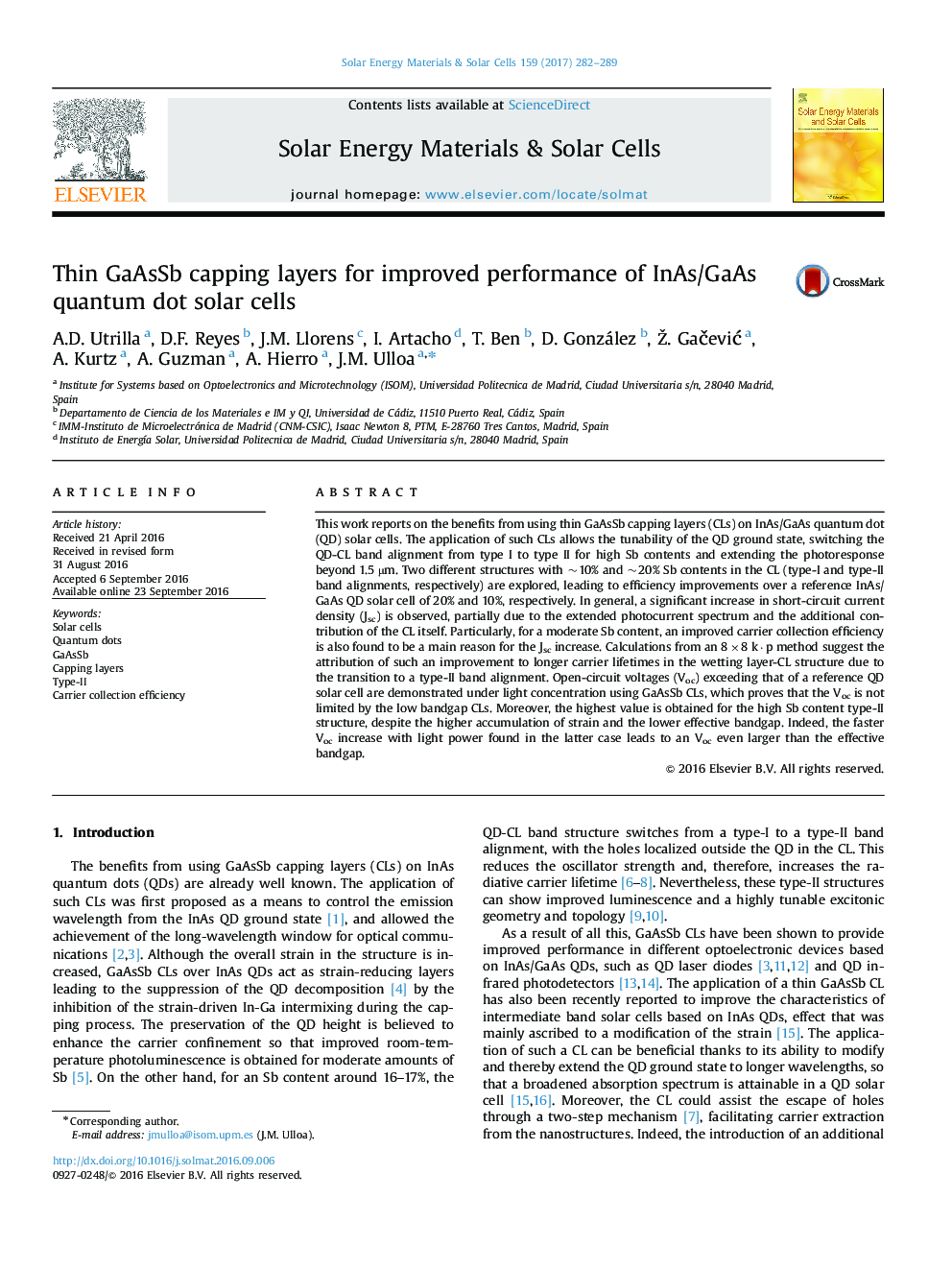| Article ID | Journal | Published Year | Pages | File Type |
|---|---|---|---|---|
| 6457501 | Solar Energy Materials and Solar Cells | 2017 | 8 Pages |
â¢GaAsSb capping layers significantly enhance InAs quantum dot solar cells efficiencyâ¢Photoresponse beyond 1.5 µm is obtained from InAs quantum dot solar cellsâ¢The negative impact of the wetting layer is palliated by the GaAsSb capping layerâ¢High Sb content type-II structures lead to a faster Voc recovery under concentration
This work reports on the benefits from using thin GaAsSb capping layers (CLs) on InAs/GaAs quantum dot (QD) solar cells. The application of such CLs allows the tunability of the QD ground state, switching the QD-CL band alignment from type I to type II for high Sb contents and extending the photoresponse beyond 1.5 µm. Two different structures with ~10% and ~20% Sb contents in the CL (type-I and type-II band alignments, respectively) are explored, leading to efficiency improvements over a reference InAs/GaAs QD solar cell of 20% and 10%, respectively. In general, a significant increase in short-circuit current density (Jsc) is observed, partially due to the extended photocurrent spectrum and the additional contribution of the CL itself. Particularly, for a moderate Sb content, an improved carrier collection efficiency is also found to be a main reason for the Jsc increase. Calculations from an 8Ã8 k·p method suggest the attribution of such an improvement to longer carrier lifetimes in the wetting layer-CL structure due to the transition to a type-II band alignment. Open-circuit voltages (Voc) exceeding that of a reference QD solar cell are demonstrated under light concentration using GaAsSb CLs, which proves that the Voc is not limited by the low bandgap CLs. Moreover, the highest value is obtained for the high Sb content type-II structure, despite the higher accumulation of strain and the lower effective bandgap. Indeed, the faster Voc increase with light power found in the latter case leads to an Voc even larger than the effective bandgap.
